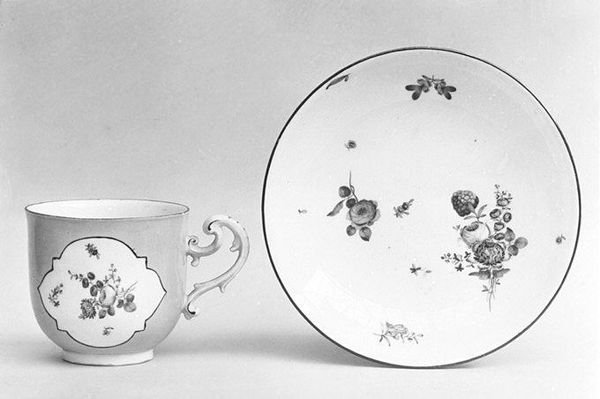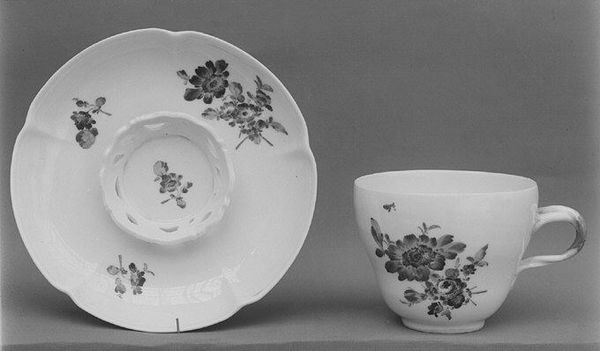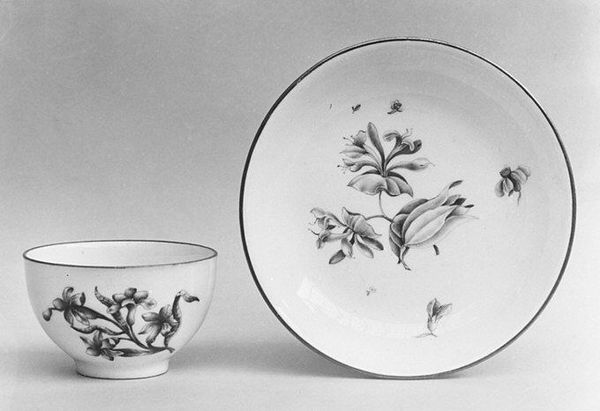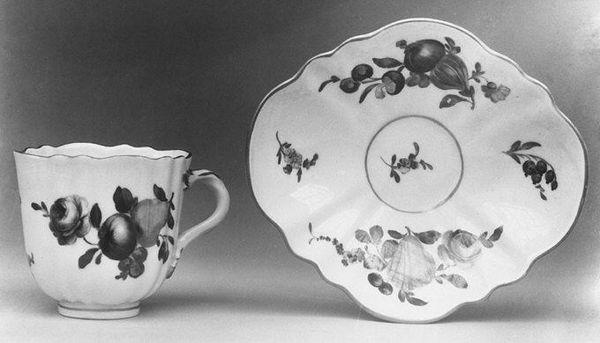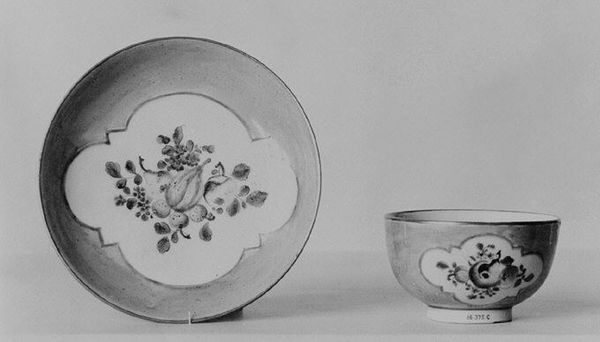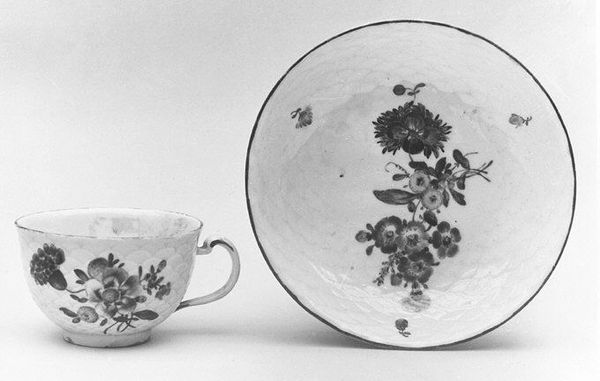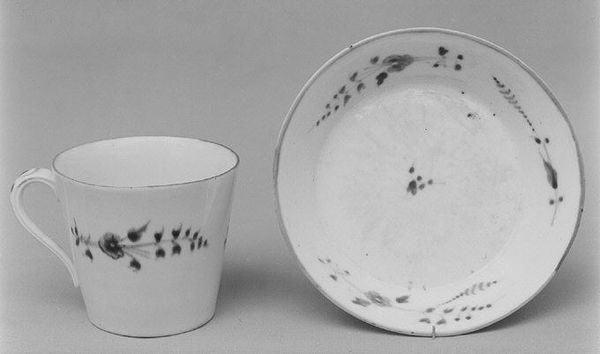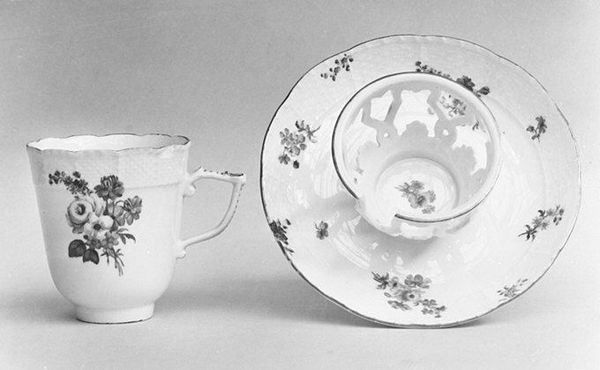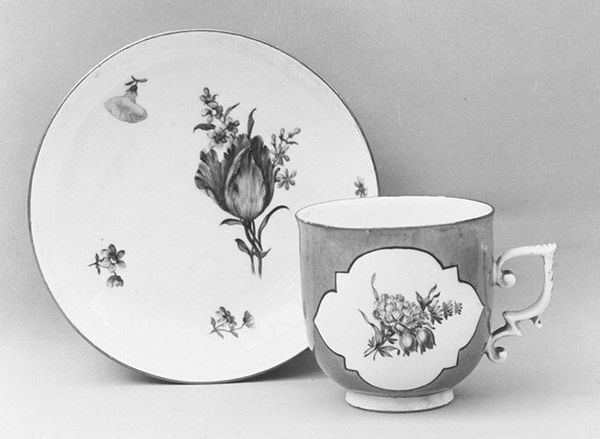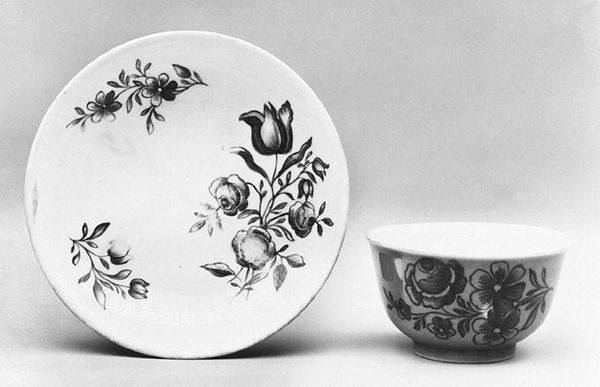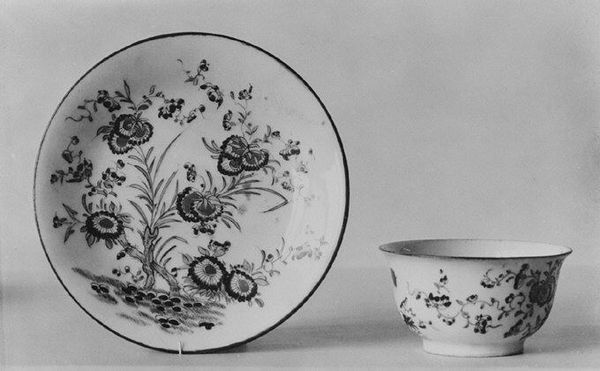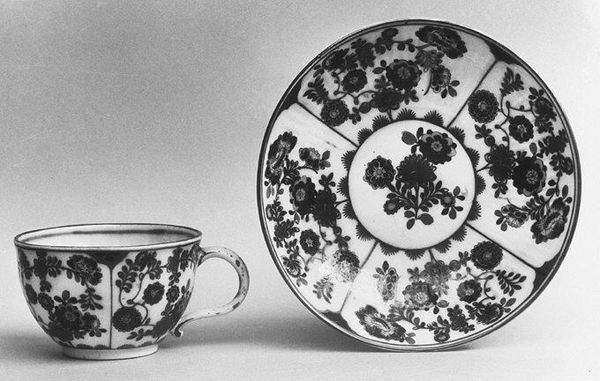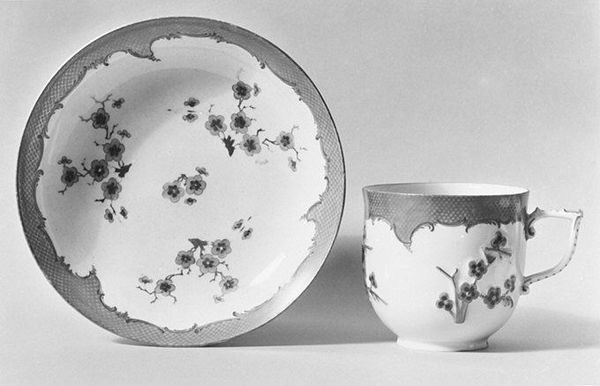
ceramic, porcelain, sculpture
#
ceramic
#
porcelain
#
sculpture
#
decorative-art
#
rococo
Dimensions: Height (cup .177): 2 3/4 in. (7 cm) Diameter (saucer .178): 5 1/8 in. (13 cm)
Copyright: Public Domain
Editor: Here we have a porcelain cup and saucer, crafted sometime between 1745 and 1755 by the Meissen Manufactory. The floral decorations look delicate, and the scalloped edge of the saucer adds an extra touch of refinement. I’m struck by how formal, almost staged, the composition feels. What do you see when you look at it? Curator: Indeed. Analyzing the formal elements, we observe a clear emphasis on symmetry and balance in the arrangement of floral motifs, both on the cup and the saucer. The careful placement and repetition create a harmonious visual rhythm. Note also the delicate curvature of the cup’s handle, and how this echoes the undulating rim of the saucer. How does the use of negative space contribute to the overall effect? Editor: Well, there’s a lot of white porcelain showing around the flowers. I guess it makes them stand out more? Curator: Precisely. The expanse of white serves as a grounding plane, accentuating the precise detailing of the floral decorations. It allows the viewer to appreciate the lines, forms and textures of the applied pigments. Consider the play between smooth, unadorned porcelain surfaces and the intricate painted sections: this dichotomy enriches the haptic dimension, providing depth and visual contrast. What do you think the composition suggests? Editor: That the arrangement isn't accidental, that every element is consciously chosen. I also get the idea that maybe it has a purpose beyond simply serving as a cup and saucer. Curator: An astute observation. Indeed. These were objects of display, meant to showcase not only their utility but the artistry and refinement of their production. Note also the lack of expressive dynamism or raw brushwork. Its formal elements suggest controlled harmony rather than gestural spontaneity. Editor: That makes sense. I see how looking closely at those specific aspects leads to understanding the piece in a totally new way! Curator: Indeed, analyzing those visual strategies yields valuable insights into artistic intent, historical values, and design paradigms.
Comments
No comments
Be the first to comment and join the conversation on the ultimate creative platform.
